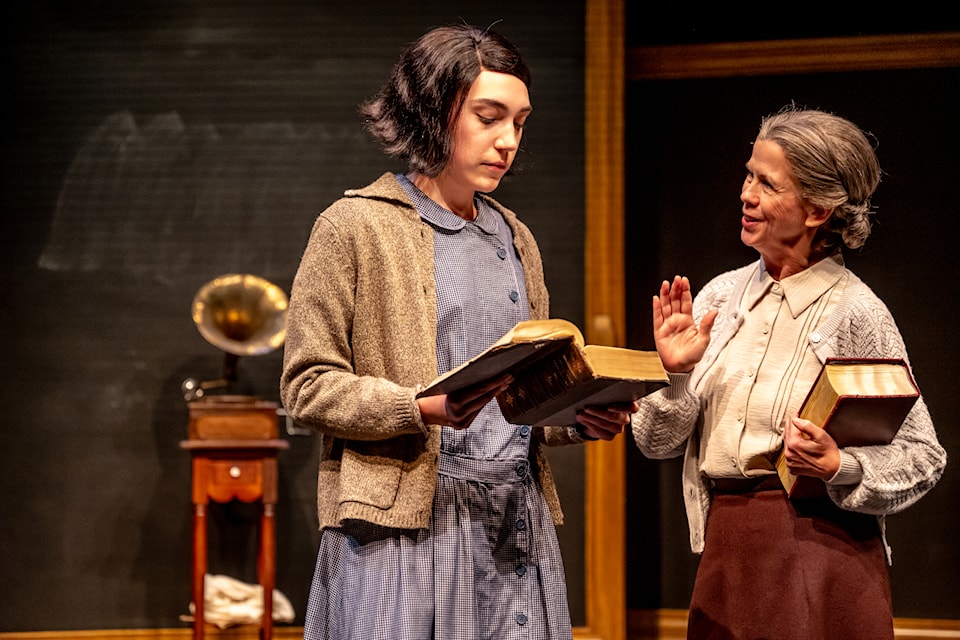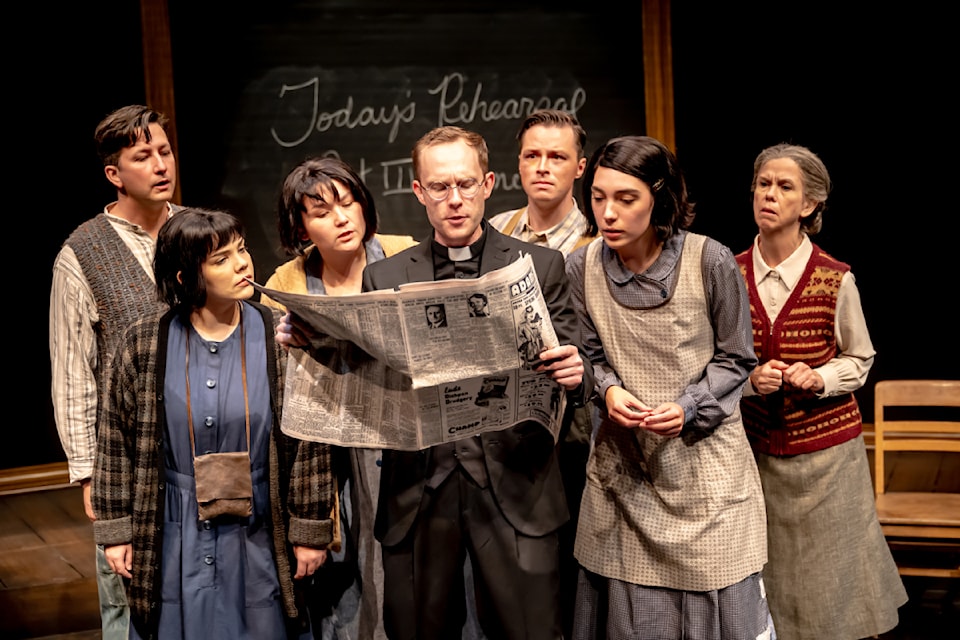In the play 1939, humour is more than just a way to lighten the mood; it's a tool for survival, a way of fighting cultural assimilation and coping with the trauma of Canada's Residential School system.
Co-writers Jani Lauzon and Kaitlyn Riordan show how Indigenous students, forced to stage Shakespeare’s All’s Well That Ends Well, use wit and resilience to subvert the colonial narrative imposed upon them, reclaiming their identities through laughter and defiance.
1939 is a careful and powerful fusion of Indigenous history and Shakespearean comedy, set in Canada’s colonial past with the highest colonial representative possible. It takes place in a fictional Anglican Residential School in Northern Ontario during King George VI’s royal visit in 1939.
As the students work through the classic, they begin to see similarities between themselves and the characters in the play.
"Humour is a form of resilience," Lauzon explains in an interview with Monday Magazine.
As the students perform All’s Well That Ends Well, they transform the classic comedy into an act of humourous self preservation.
The play, which premiered at the Stratford Festival and is now co-produced by Canadian Stage and the Belfry Theatre, explores cultural identity, resilience, resistance and reconciliation. Lauzon’s personal connection to Shakespeare and efforts to make Shakespeare accessible to Indigenous actors fuel much of the play’s creative energy.
“My foster father was a lover of Shakespeare, and he was a high-school drama teacher, so I fell in love with Shakespeare,” Lauzon said. “But when I came into the industry, I was told in one of the classes that I could take the class, but it would probably be a waste of my money as I wouldn't be hired as a Shakespearean actor because of the colour of my skin…
“I’m not one for letting the world tell me what I can and cannot do,” she continued.

The writing of 1939 involved extensive research as well as guidance from Elders and Survivors. During the research at the Algoma University archives in Sault Ste. Marie, the writers focused on reading materials from the Children of Shingwauk Alumni Association, particularly letters and other writings by students. Lauzon was struck by how the students tried to uplift themselves despite the harsh conditions. Lauzon and Riordan also discovered a teacher who wanted to introduce Shakespeare to Residential School students.
“Humour is medicine,” Lauzon says. “It’s medicine for the students. It’s medicine for the audience.”
In 1939, Father Callum Williams, a priest and teacher at the Residential School, is humourously forced to play the King of France in the students' performance, while Sian Ap Dafydd, the English teacher, is determined to mould the students into “good little Canadians,” pushing them to adopt British accents.
Lauzon and Riordan were inspired by the Truth and Reconciliation Commission’s Calls to Action, specifically recommendation 83, which encourages collaborations between Indigenous and non-Indigenous artists.
“Kaitlyn and I were always clear that what we hoped the play would do would open up conversations around reconciliation,” Lauzon says.
By intertwining Shakespearean humour with Indigenous storytelling, 1939 not only bridges cultural gaps but also invites audiences to reflect on Canada’s history and its ongoing journey toward reconciliation. After each performance, a "reflection space" is offered, allowing audiences to reflect on their experience of the production, ask questions, and engage in dialogue about the play’s themes.
“People have an opportunity to stay and to actually debrief and have conversations and ask questions and talk with each other,” Lauzon explains, “because it's the conversation around the play that is as important as the play itself.”
The Belfry performance marks the third iteration of 1939, with actors Richard Comeau and John Wamsley returning from the Stratford production.
“What I love about re-visiting a work again is that I always learn new things as a director,” Lauzon says. “I love working with actors for this very reason. Each one will interpret the character in new and innovative ways.”
1939 is on stage at Victoria' Belfry Theatre from Oct. 29 to Nov. 24. For ticket information and details, visit belfry.bc.ca/event/1939



